Keep reading for just $1
$1 trial for two weeks, thereafter $8.50 every two months, cancel any time
Already a subscriber? Sign in
Signed in as . Sign out
 Documentary
Documentary
A place where wild meets weird - and nothing is quite what it seems. Presenter Peter Elliott unravels the ancient past of New Zealand revealing astonishing new facts about the origins of our iconic animals. Be prepared to be shocked.
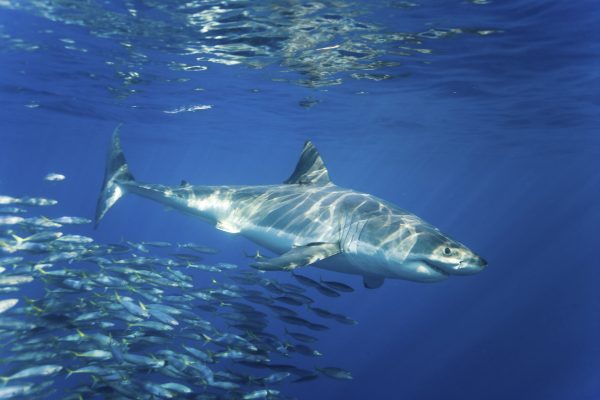 Documentary - Wonders of the Ocean
Documentary - Wonders of the Ocean
Life in the ocean is a constant battle to eat but not get eaten, to find a mate, to pass on your genes to the next generation...to survive.
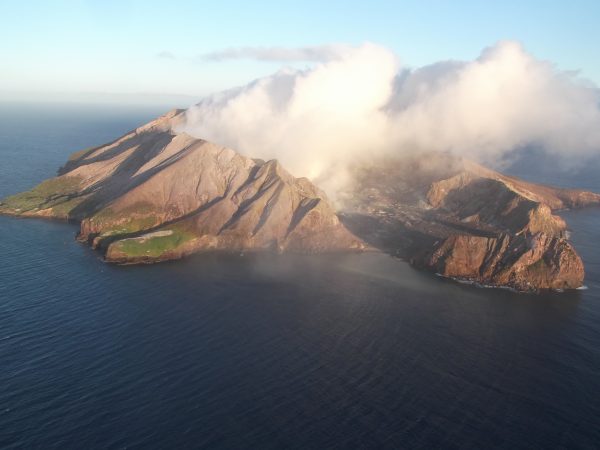 Documentary - Wonders of the Ocean
Documentary - Wonders of the Ocean
Pacific Islands range from coral atolls and smoking volcanoes to pieces of a lost continent. Discover the wildest stories of adaptation and survival on these Islands of Life.
 Documentary - Wildlife Rescue New Zealand
Documentary - Wildlife Rescue New Zealand
At the Dunedin Wildlife Hospital, Dr Lisa needs to urgently assess a pair of unwell kākāpō, and Lizzie must convince a traumatised shag that it can swim. Many other animals are reaching the end of their rescue journeys as the southern summer draws to a close. The yellow-eyed penguin chicks brought in after an oceanic famine are finally old enough to be released into the wild. So too the four kākā chicks that were hand-reared by the Wildlife Hospital. The rascally parrots make an epic journey to the dazzling wilderness of Abel Tasman National Park, where a bright future awaits.
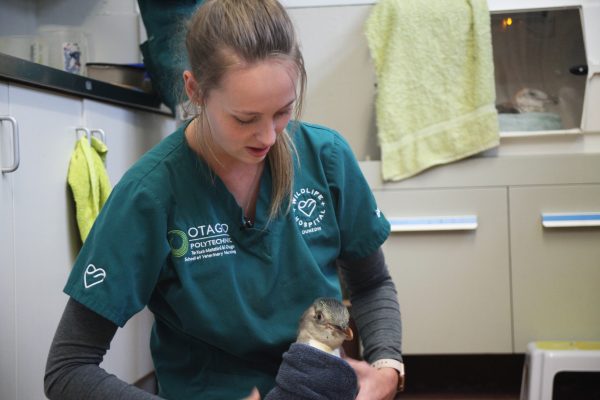 Documentary - Wildlife Rescue New Zealand
Documentary - Wildlife Rescue New Zealand
At Dunedin’s new Wildlife Hospital, the team have been thrown a curve ball! Some yellow-eyed penguins have tested positive for avian malaria, and what’s more terrifying is they’re not alone. The team must jump into action to prevent an all-out epidemic. But the penguins aren’t their only patients. At two months old, the kākā chicks have become quite the handful, and need a new home quickly! In the quarantine wing, the population of kākāpō chicks is steadily increasing, but four new-borns have developed a potentially deadly disease. Lisa and her team will have some long nights ahead of them to save these precious babies.
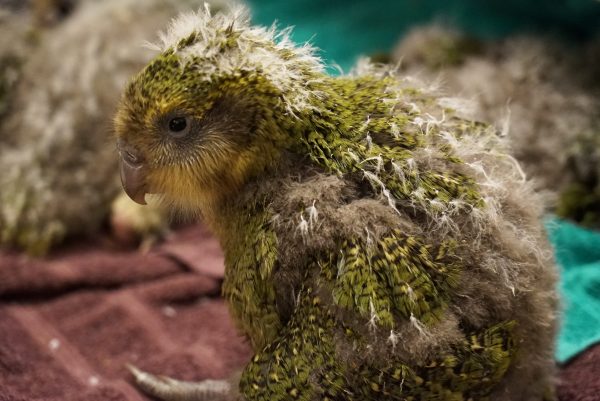 Documentary - Wildlife Rescue New Zealand
Documentary - Wildlife Rescue New Zealand
It’s mid-summer in Dunedin, and the city’s wildlife rescuers are in a flap. Eight newly-hatched kākāpō chicks have landed at the Wildlife Hospital, requiring Dr Lisa’s expert care. Lizzie and Emily need to deal with a very angry Fiordland crested penguin (who they soon nickname ‘Purple Rage’). And nurse Gina can’t help but laugh at the antics of the naughty kākā foursome. Out on the Otago Peninsula, the search for a mother sea lion and her pup goes to the dogs, literally, while a penguin researcher lives out her worst nightmare, and Purple Rage goes to rehab at Penguin Place.
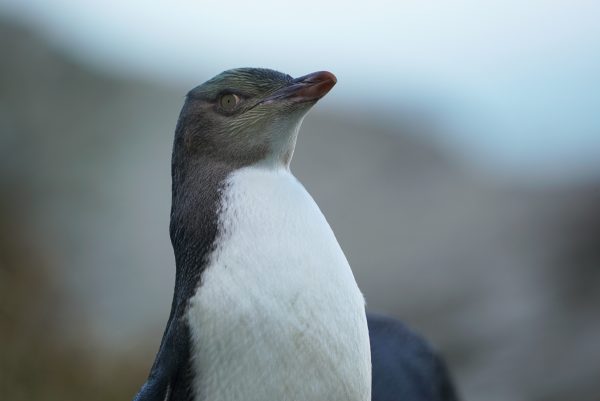 Documentary - Wildlife Rescue New Zealand
Documentary - Wildlife Rescue New Zealand
Its early summer in southern New Zealand, and the Dunedin Wildlife Hospital has been inundated with wave after wave of starving penguin chicks. Dr Lisa Argilla and her team pull out all stops to save the hungry youngsters. Add to this a clutch of endangered kākā parrot chicks that need ‘round-the-clock care, and a kiwi that’s refusing to eat; the results are bedlam. The hospital is being stretched to its limits. Meanwhile, out on the Otago coast, Pete investigates the arrival of a rare leopard seal, and Rosalie helps get an ex-hospital patient back into the wild.
 Documentary - Wildlife Rescue New Zealand
Documentary - Wildlife Rescue New Zealand
The new Dunedin Wildlife Hospital provides a second chance for injured native animals. Every day, Dr Lisa Argilla and her small team of wildlife vets give their all to save our precious fauna – from kererū pigeons with internal injuries caused by flying into windows, to a yellow-eyed penguin chomped on by a shark. Not all the arrivals survive their trauma, but thanks to the dedication of Lisa’s team and a network of local wildlife carers, most are successfully rehabilitated and finally released back into the wild. In an era where every animal counts, these are the precious moments that wildlife rescuers live for.
 Documentary - South America's Weirdest Animals
Documentary - South America's Weirdest Animals
South America’s Weirdest Animals is a 3-part series about South America’s wildest, weirdest and the most diverse animal life – from northern reaches of Colombia to the southern tip of Argentina and Chile.
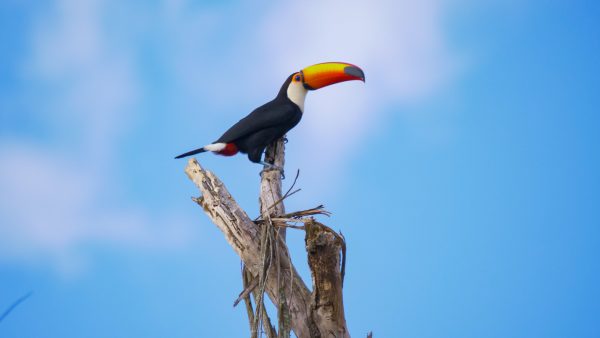 Documentary - South America's Weirdest Animals
Documentary - South America's Weirdest Animals
South America’s Weirdest Animals is a 3-part series about South America’s wildest, weirdest and the most diverse animal life – from northern reaches of Colombia to the southern tip of Argentina and Chile.
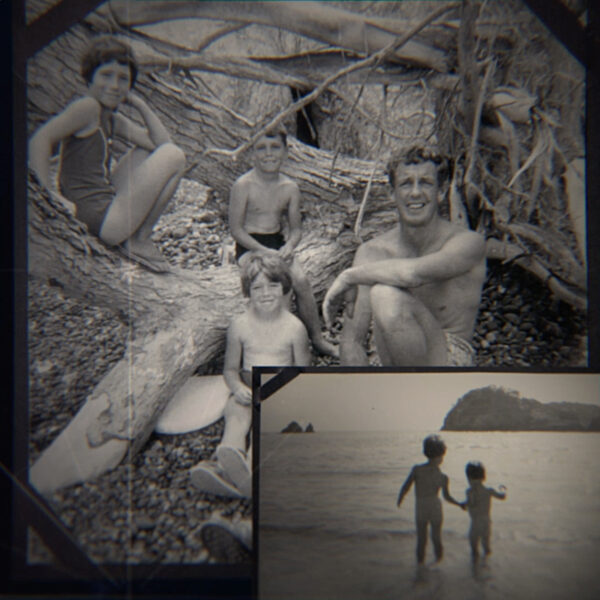 Short - Songs of the Sea
Short - Songs of the Sea
Sue Neureuter grew up visiting the Noises Islands which have been in her family since the 1930s. Having witnessed the decline in marine life and seabirds in the Hauraki Gulf first-hand she recalls her parents' stories. “When Mum first got to the Noises which was the late fifties, Dad used to make her row out and he’d put his rugby jersey on and plop over the side and pick crayfish up and dump them around her feet.” This personal account is the first of a New Zealand Geographic-produced web-series—made in association with Live Ocean and Pew Charitable Trusts—that examines the former abundance of the Hauraki Gulf through the memories of those who can still remember these Songs of the Sea.
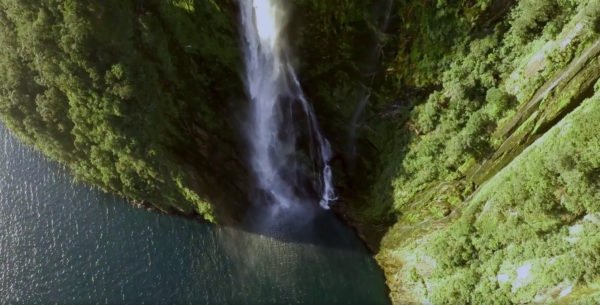 Documentary - Our Big Blue Backyard Season 2
Documentary - Our Big Blue Backyard Season 2
In the cold, steep world of the fiords, tannins block out sunlight to the world below. The fiords are cold and inhospitable in winter, when they receive little light and freeze over at their extremes. In this unforgiving world there are no second chances
 Documentary - Our Big Blue Backyard Season 2
Documentary - Our Big Blue Backyard Season 2
In the Bay of Plenty, New Zealand’s most active volcano fills the sky with plumes of white cloud. Sterile and inhospitable, the forces that built White Island influence the seas around it.
 Documentary - Our Big Blue Backyard
Documentary - Our Big Blue Backyard
New Zealand’s Poor Knights Islands is considered one of the world’s top dive sites and for good reason, with a rich collection of extraordinary characters and bizarre behaviors, including a unique congregation of stingrays and sex-changing Sandagers Wrasse.
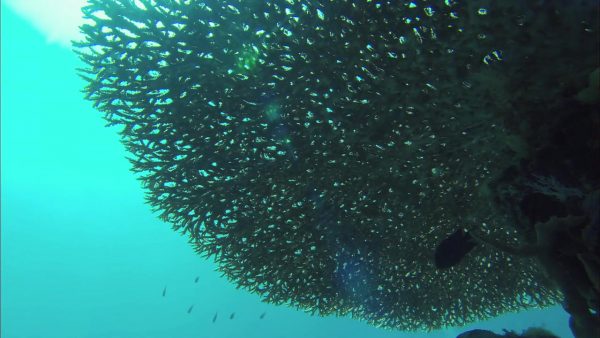 Documentary - Equator
Documentary - Equator
A mysterious and beautiful life form, the Pacific’s coral reefs are challenging the very definition of what makes a species.
 Documentary - Equator
Documentary - Equator
Ecuador’s Andes are mountains of paradox, where tropical species live alongside ice age relics in an unpredictable alpine desert.
The award-winning Wild South documentaries began filming in 1978 and quickly became a memorable feature of television programming about Aotearoa's natural world. The slot's initial focus was on New Zealand’s perilously endangered birds, eg the Chatham Island black robin—then the world’s rarest bird. The results won local and international notice, and a loyal audience.
The Better Ancestors series is dedicated to telling the stories of those amazing people in our world who are trying to be better ancestors to future generations. The planet is experiencing catastrophic environmental disaster, and it is up to us to think long-term and take action to ensure a sustainable and healthy future for all of humanity. Using the stories of those already leading the charge in sustainability as inspiration, we should all ask ourselves, what can I do to be a better ancestor?
Our Big Blue Backyard dives deep into the seas to discover stunning stories of New Zealand's native ocean animals. In Season 1 we visit Northland, Goat Island, the Poor Knights, Kaikoura, Open Bay Islands and Rakiura/Stewart Island.
We expose the killer characteristics of natural disasters using archive footage, survivor stories, and ‘expert’ interviews, counting down to the ultimate disaster – a hypothetical event of unparalleled force.
Each episode of this nature documentary show purports to show 24 hours of one wild location among many from around the world.
Beware, some of the nastiest, most dangerous bugs might be lurking in our homes and yards But fear not, the Bugman is here... He will track them down. Ruud Klienpaste takes us on fearsome journey to find the world’s most dangerous bugs.
Our Big Blue Backyard dives deep into the seas to discover stunning stories of New Zealand's native ocean animals. In Season 2 we visit the Kermadecs, White Island, Chatham Islands, Fiordland, Auckland Islands and Banks Peninsula.
Shark Gordon follows internationally-renowned shark enthusiast Ian Gordon to the depths of the world’s most dangerous shark-infested waters. Gordon takes us on his passionate pursuit of the world’s most feared predators, making incredible new discoveries and dispelling some myths about sharks along the way.
Nature beat us to the patent office with a number of innovations we like to think of as our own... In this three part series we take an entertaining and insightful journey through the halls of nature’s inventions and learn a thing or two from our furry, feathered and ambidextrous friends.
Megastructures focuses on extreme construction projects—be they the biggest, tallest, longest or deepest in the world—and the machines used to create extraordinary structures.
Our worlds have collapsed to the size of our backyards, but there remains plenty to explore in these small havens... for those who know how to look. Backyard Birding is a series of 18 short videos delivered over web and social, designed to bring parents and children together in their backyards to look and listen and get to know their immediate environment on a more intimate basis.
In the world of Extreme Animals, meet the Babies! From the cute and the seemingly helpless, to the weird and sometimes downright creepy, get ready for a top ten countdown of the world’s most extreme animal infants.
Medicine is not just about sterile laboratories and white coats. It’s about people — those with illnesses and those who look for ways to cure them. The stories are as old as humankind, and there have been few happy endings. More often than not, the cure was just as likely to kill the patient as the disease. Major advances in surgery, obstetrics, psychotherapy, and general medicine have been gained at the cost of countless lives and untold suffering. As medical science prepares to enter a new age of hi-tech miracles, Kill or Cure traces the stories of the great healers and snake-oil fraudsters, the triumphs and disasters, the plain dumb luck and flashes of brilliance that have largely rescued humanity from pain and sickness. The six-part series will take viewers back to Roman times, to Medieval Europe, to the American Civil War, to Victorian London, and on into space. They will witness strange and bizarre cures for strange and bizarre illnesses; and they will see how procedures and medications that are now mundane were once considered either impossible or ridiculous.
In four decades of natural history filmmaking, NHNZ camera operators captured some doozies.
Few today can remember for former glory of the Hauraki Gulf—the decline in productivity of one of the greatest ecosystems on Earth happened over generations. To grasp what has been lost, and what could be recovered, we need to listen to the voices who still remember the songs of the sea. Some of them are still with us, some will read from personal diaries half a century old, others have passed on, but their stories have been recorded in interviews where we have the original audio.
The Kermadecs/Rangitāhua bridges tropical and temperate waters, and is so isolated that it is one of the few places in the world unaltered by humankind.
The Wild Asia series is set in the tropics of Asia, exploring the lush landscapes of the forests to the arid deserts and the amazing lives of the wildlife that rely on these lands.
From the heights of Mt Cook to the misty “shadowlands” of Fiordland and the spectacular Hauraki Marine Park, Wild About NZ™ explores the magic found in New Zealand’s National Parks through the eyes of environmental specialist and adventure guide, Gus Roxburgh.
For thousands of years, across the vastness of Eurasia, there has been a trade route linking East and West. The Silk Road trade has fuelled revolutions and significantly affected civilisations.
The Equator is not only the line that divides the Earth in two; it is also the climatic and evolutionary powerhouse of the world. Here, where the sun burns at its most intense, the pace of evolution quickens. The Equator covers only five percent of the Earth’s surface but is home to 50 percent of its animal and plant species. This remarkable series, filmed in high definition, takes us to the most extreme and diverse locations on the planet. The series examines animal and plant life in six of the world’s equatorial ‘hotzones’: The Rift Valley in Africa; the Amazon Basin; the peaks of the Andes; Borneo; Indo-Pacific and the Galapagos Islands.
Mike Leahy used to be a motorcycle mechanic, but after 10 years of grease and gears he decided to go back to school. But not just any school - Mike got into Oxford University and completed a PhD in Virology - so now he's Doctor Mike. Doctor Mike is really interested in two things: travelling and bitey bugs and beasties. Join Doctor Mike on an unforgettable journey around the globe to learn more about creatures who love nothing more than to take a little vacation of their own on, around or inside the human body.
Follow the fortunes of raising a moose, seal, hyena, bear, panda and gorilla over their precarious first year of life.
China Revealed is a 3D expedition into a still undiscovered land. Lost in the vastness of China are sublime landscapes and cultural sites that the Western world has never seen. Now, for the first time ever these secret places are captured in a journey of discovery that you’ll never forget. From a mythical mountain valley that hides 1000 giant stone pillars to ancient Buddhist relics that are rediscovered in the swirling sands at the start of the legendary Silk Road - China Revealed ventures into the land of the dragon and brings legends to life.
An examination of some of the unusual strategies that animals have developed to survive, as scientists attempt to understand why these bizarre behaviours were developed.
The world is full of amazing animals, so how would you choose the best of the best? The Most Extreme is a fun look at how the best (and worst) of our world stack up against the animal kingdom. It’s much more than just a list of the top ten fastest animals, or the strongest, or the wierdest. The Most Extreme goes way further, comparing all kinds of human achievements with those of nature in the most graphic way possible. This 13-part series looks at Extreme Jumpers, Extreme Gluttons, Extreme Speed, Extreme Cheats, Extreme Survivors, Extreme Births, Extreme Builders, Extreme Strength, Extreme Fighters, Extreme Smarts, Extreme Lovers, Extreme Horrors, and Extreme Biters.
The story of New Zealand: from its unique and rich natural history to its bustling urban heart. This series, designed for the Chinese audience, tells of the country’s origins, its multicultural make-up, its history with China and the innovators who have helped shape it.
X Force explores the science behind the adrenalin rush of extreme disciplines. We experience the thrill with the leading exponents of extreme sports: feeling the apprehension and enjoying the elation. By bringing together top adventurers of six different disciplines and using 3-D graphics, we compare and contrast the psychological and physiological demands of each activity.
Former zoo-keeper Hayden Turner goes hunting with isolated tribes around the globe, including the Baka from Cameroon who use their voices and poisonous darts as weapons; the Namal people of Vanuatu; the Malaysian Jahai tribe who use blow-pipes to hunt; and the Saan in the Kalahari desert, renowned for their running hunt.
At the bottom of New Zealand is a hospital like no other. The patients have paws, claws and feathers, but this isn’t a veterinary clinic for pets. The Dunedin Wildlife Hospital caters exclusively for native New Zealand animals, from the iconic kiwi bird and enigmatic kakapo parrot, to plucky penguins and aggressive sea lions. It’s the only facility of its kind, and offers a precious second chance for injured wildlife. Wildlife Rescue New Zealand follows the trials of injured animals as they’re rescued, rehabilitated and released back into the wild, whilst exploring the human journeys of those who dedicate their lives to safeguarding vulnerable wildlife.
The Pacific is the largest, deepest ocean on our planet. It encompasses the most extreme range of environments nature has to offer, from deep ocean trenches to undersea volcanoes; tropical lagoons to wave-tossed sub-Antarctic waters. It’s also home to more islands than any other place on earth, which range from coconut lined atolls to barren volcanic rocks and Jurassic remnants of a drowned continent. The most remarkable thing about the Pacific is that life has managed to gain a foothold in all these environments. Unique and often bizarre creatures have adapted below and above the waves to make the most of every situation. This series showcases the many incredible creatures that have evolved to call the Pacific home.
The North Pole and the South Pole are icescapes that seem and look very alike, but look closer and you will find they are as opposite as night and day, summer and winter, for the Arctic and Antarctic are literally poles apart.
South America: the world’s fourth largest continent. It’s the birthplace of the mighty Amazon, the spectacular Andes, the great Cerrado and the ferocious Pantanal. But there are lesser known vistas too: the Atacama Desert, the Mata Atlantica, the Caatinga and the Llanos. Here, life is as diverse as the land that supports it. Life here is also a challenge. To revel in South America’s splendor, inhabitants must first fight through its fury. To survive is to adapt. In this quest to change, adapt and survive, the South American wilderness has turned its back on conventions. In their myriad spectacular forms, they are South America’s Weirdest Animals.
A two part documentary series about the natural history of life on the islands of the Pacific.
Twisted Tales is a series presented the true story behind modernity's tallest stories. And as we shall find out, truth is almost always stranger than fiction.
Go behind the scenes to find out how a team of 18,000 workers in northern China cut and shape nearly 400,000 cubic meters of ice and snow into one of the biggest winter festivals in the world… in less than a month.
The Aleutians: Cradle of the Storms is a two part series that tells the absorbing story of an island chain and its people who have endured and survived wave after wave of invaders. In Part One we reveal the storm lashed islands and the 9000 year culture that is forever changed by fur-seeking outsiders.
Join the young and talented recruits of China’s Wuqiao School of Acrobatic Arts as they push themselves to extremes trying to achieve that perfect performance – with dreams of making it as a professional elite acrobat.
Every year, thousands of people flock to the crystal clear waters and white sands of the South Pacific islands, but few realise that these idyllic atolls conceal some of the bloodiest secrets of World War II.
A series that reveals the drama and surprising behaviours as charismatic travellers roam the oceans, forests and deserts of Wild Mexico.
Asia: the world’s fastest growing industrial powerhouse; a centre of innovation and home to boundary-breaking design. From Japan to Taiwan to South Korea, Asia is at the forefront of cutting edge architecture, design and engineering. The tallest building, the toughest tunnel or the fastest train, Asia is generating projects that push the limits beyond what was ever deemed possible, and creating designs that challenge the conventions of aesthetics Man Made Marvels takes you on a journey through a number of these revolutionary constructions: the visionary ideas, the seemingly insurmountable difficulties and the incredible triumphs.
Deep within Brazil is the largest and richest wetland in the world - home to exotic and feared creatures such as caiman, anaconda, and piranha. But as the seasons turn from flood to drought and the waters retreat, water dwellers face a frantic struggle for survival. In the heart of tropical Brazil, a vast inland sea ebbs and flows with the wet and dry seasons. A land of water is transformed into a sea of grass, and deer, anteaters and jaguars live where schools of fish once swam. This is a unique view of life in one of the world’s largest and richest wetlands.
The Fantastic Plastic series investigates the remarkable world of plastics and takes an in-depth look at how these materials are created, and what makes them so unique. Using these magic molecules we can smash sporting records, explore even the deadliest environments and perform medical miracles. But the series also considers whether, as we increasingly place our lives in the hands of plastics, there could there be a darker side to these man-made materials? Fantastic Plastic ⎯ Magic Molecules and Fantastic Plastic ⎯ A Future Near You examine the serious concerns some researchers are voicing about the impact of plastics on our health and the environment, and show what is being done to combat these problems.
Ambassadors for conservation, pioneers of discovery, and leaders in expedition travel to the world's best-kept secrets. For the past 30 years, Heritage Expeditions has pioneered conservation-driven voyages to some of the most wild, least-explored and biologically rich regions on the planet. This is their story.
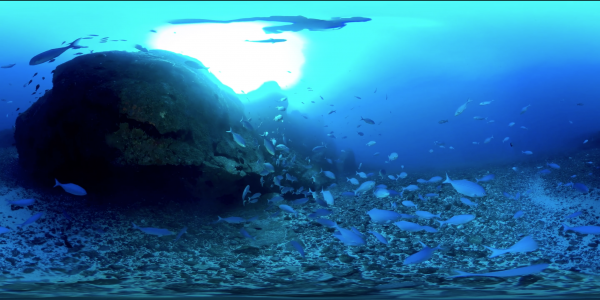 Virtual Reality / 360 Video - NZ 360
Virtual Reality / 360 Video - NZ 360
Making New Zealand a little more real to New Zealanders, using virtual reality.
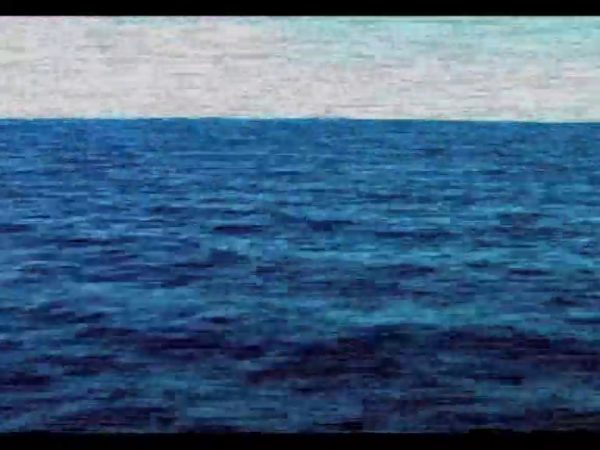 Documentary
Documentary
Discover why ‘The Devil’s Sea’ off the south coast of Japan is so extraordinarily deadly and decide for yourself if this stretch of water could be the Bermuda Triangle of the Pacific.
 Documentary - Megastructures
Documentary - Megastructures
On the banks of the Pearl River in Guangzhou city, an impressive new silhouette is placing China’s third largest city firmly in the limelight. The Guangzhou Sightseeing and TV Tower is a shrine to modern technology and design–and testimony to the vision of a small architectural team who dared to dream big.
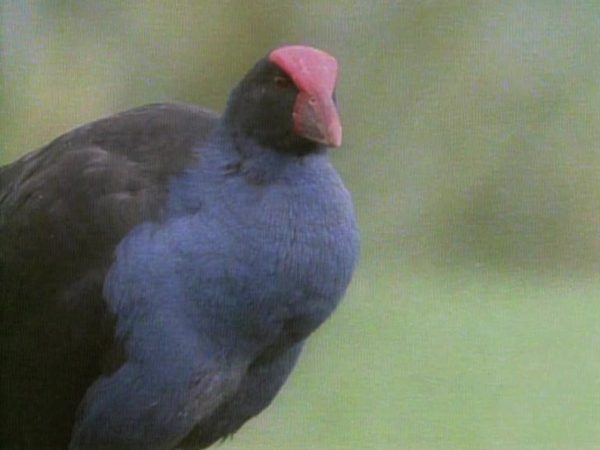 Documentary - Wild South
Documentary - Wild South
Promiscuous, incestuous and homosexual, our native swamp hen is a rather remarkable bird. At Western Springs Wetlands, deep in Auckland’s western suburbs, two families of pukeko carry on their very communal lifestyle in an entirely natural way – despite pressures from other birds, and hand-outs of stale bread and buns.
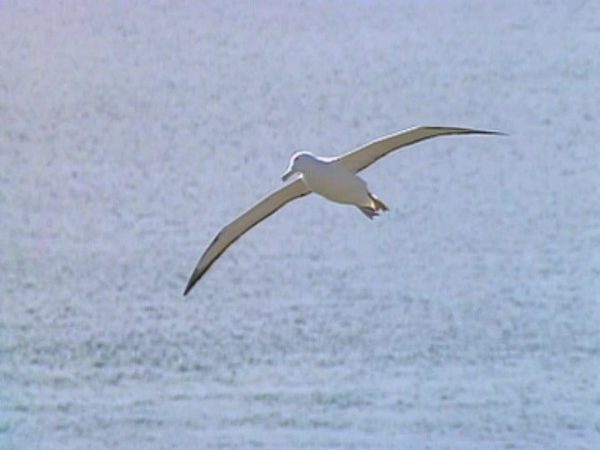 Documentary
Documentary
At over 60 years of age, “Grandma” a Northern Royal Albatross, is the oldest banded bird in the world – and incredibly, she is still breeding.
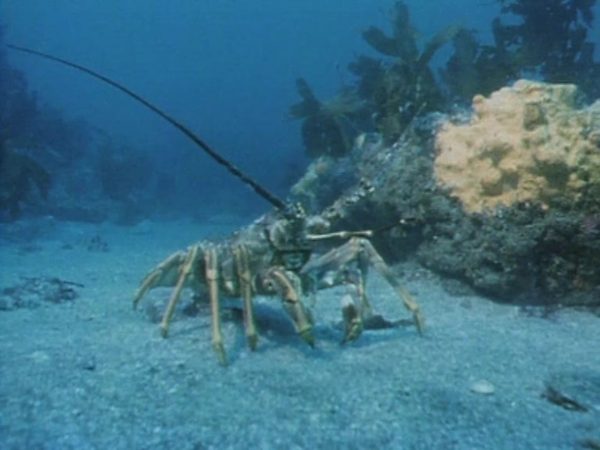 Documentary - Wild South
Documentary - Wild South
Crayfish, Lobster or Langouste whatever the name, it is among the most sought after animals in the sea, but surprisingly little is known of the life of crayfish on the reef.
 Documentary - Mega Disasters
Documentary - Mega Disasters
An investigation into the anatomy of an earthquake: from the science behind recent events, ramping to a mega earthquake that’s yet to happen – the Mega Disaster.
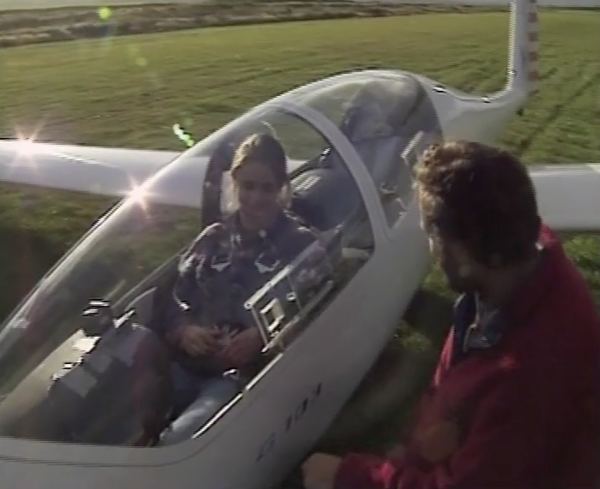 Documentary
Documentary
The story of a family whose great passion in life is to soar like the birds, to glide in the great invisible force of nature - the wind.
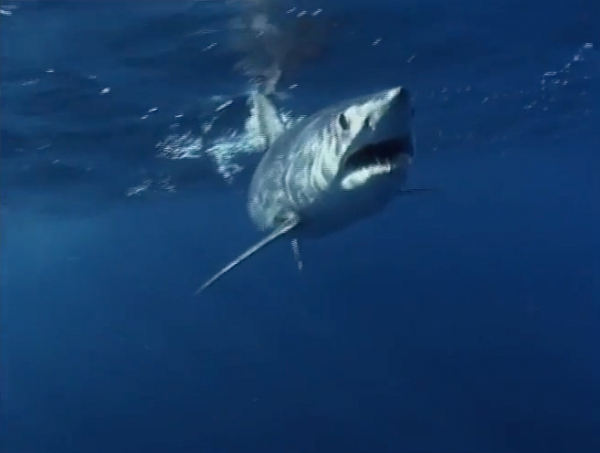 Documentary
Documentary
The story of the pioneering research into the mind of one of the most dangerous yet perhaps the most intelligent of all sharks... The Mako.
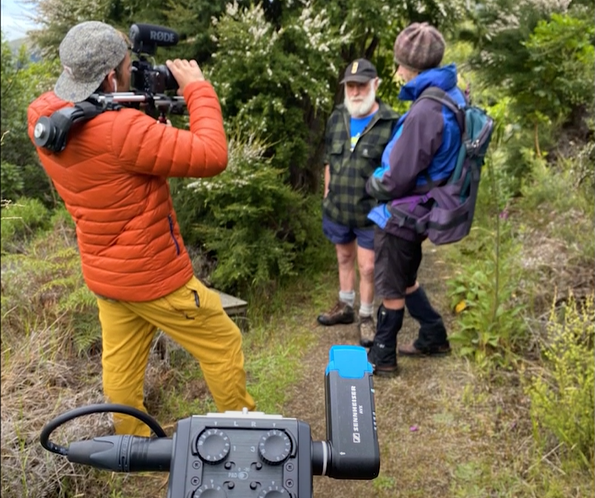 Short - Better Ancestors
Short - Better Ancestors
In 2021, Better Ancestors produced 50 stories profiling people and organisations doing their bit to find solutions to some of the world's most pressing environmental issues. So what did they learn through that process? As executive producer Warren Begley says: "If individually and collectively we act as long-term thinkers, as if we wanted to be regarded as a better ancestor, then we will find the answers together." betterancestors.org
 Short - Better Ancestors
Short - Better Ancestors
The Ngā Mōtū Marine Reserve Society was set up in 1997 to support a network of small marine reserves on the Taranaki coast - Parininihi in the north, and Tapuae near New Plymouth. The society is made up of locals who are interested in the study and preservation of local coastal and marine biodiversity and their efforts to protect kororā (little blue penguin) have helped us understand what we can do to protect other taonga species in Aotearoa. betterancestors.org
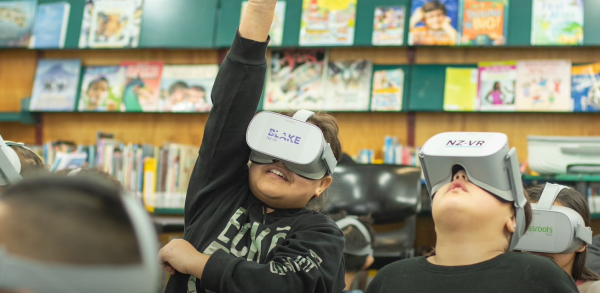 Short - Better Ancestors
Short - Better Ancestors
After Sir Peter Blake's death, The Blake Trust was set up to continue his work educating people about the state of our oceans and getting them to do more to protect the marine environment. NZVR, a partnership between Blake and New Zealand Geographic, does just that by bringing the ocean to our country's classrooms. It uses virtual reality to show rangatahi what it's like under the surface, introducing them to issues like over-fishing and pollution and, ideally, inspiring them to take action. As Blake's Alice Ward-Allen says: "Often they ask us stuff that I have never thought of. Kids just think in such different ways. The reactions we get every day are completely different. The questions we get are always different as well. They're the next generation, the ones who are going to have to step up and take care of our environment." www.betterancestors.org
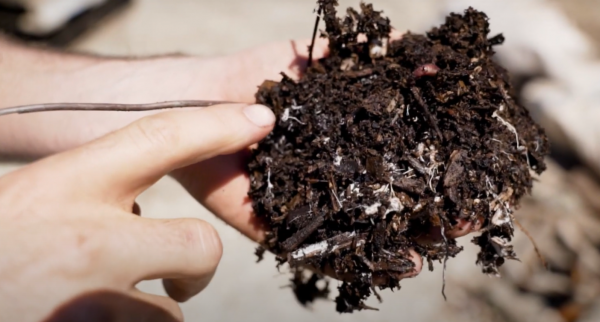 Short - Better Ancestors
Short - Better Ancestors
Untangled Landscapes started off working with domestic jungles, transforming them into well-manicured ornamental spaces. None of what they did was regenerative, however, and eventually the weeds would return. Since then, their approach has evolved and it's more about untangling people from the need to use chemicals and industrial materials in their gardens. They have stopped using poisons and weed mats - in part because they just don't work very well - and have instead started using natural principles and techniques borrowed from regenerative agriculture. As Matt Bates Cummings says: "Too often we see a symptom of something and we go 'I can't have that. I need to stop this.' And then you stop the regenerative process. We need to let things play out a lot more. It needs a bit of trust. You need to trust the process and watch it and observe it until we understand it completely." www.betterancestors.org
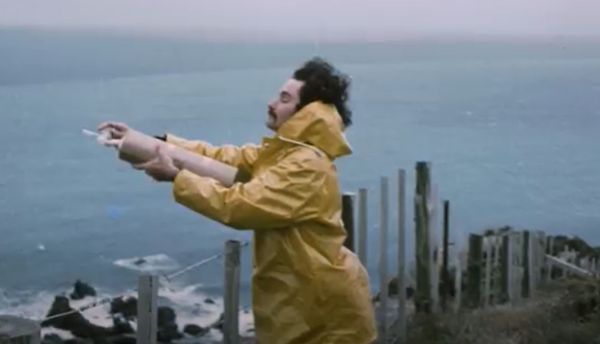 Short - Better Ancestors
Short - Better Ancestors
Dave Lowe's journey with the atmosphere began in 1970 as a 23-year-old physics graduate, where he made the first measurements of carbon dioxide levels in New Zealand. The data he collected at Baring Head became an important part of David Keeling's research into the seasonal changes of carbon dioxide levels in the atmosphere - and, due to the steadily increasing levels he charted over the years, an inescapable record of what humans were doing to the planet. "I think everyone's aware now that the climate is changing very rapidly, but this is a horror I've had to live with for over 50 years," Lowe says. So can we turn the tide? "The thing that Covid-19 has taught us was that when there's an existential threat that's in your face, human beings can collectively get up and do some remarkable things. And in the same way, human beings can get to grips with global heating and dramatically reduce carbon emissions. We know how to do this." www.betterancestors.org
 Short - Better Ancestors
Short - Better Ancestors
What was once a mess of mud after being chomped and stomped by cattle is now teeming with tūī after flax and cabbage trees were planted on the land more than ten years ago and pest control was undertaken. "The wetland has returned to its original function of being the kidneys of the land," says Dean Baigent-Mercer. "It slows down water during floods and cleans the water as it goes through." www.betterancestors.org
 Short - Better Ancestors
Short - Better Ancestors
Forest & Bird's annual campaign to give a voice to New Zealand's native birds* has grown from a small-scale promotion to a national obsession. Led by teams of volunteers who employ creative - and occasionally fraudulent - methods to drum up votes for their chosen bird, the 'country's most anticipated election' is fun and engaging, but it also aims to draw attention to the serious plight of many of our most-loved birds. As Forest & Bird's Lissy Fehnker-Heather says: "They disperse seed, they pollinate our native trees, they recycle nutrients and because humans are interconnected with nature they're part of our extended family. It's really important that lots of people are fighting for nature." *Controversially, in 2021, the long-tailed bat / pekapeka-tou-roa was also added to the list.
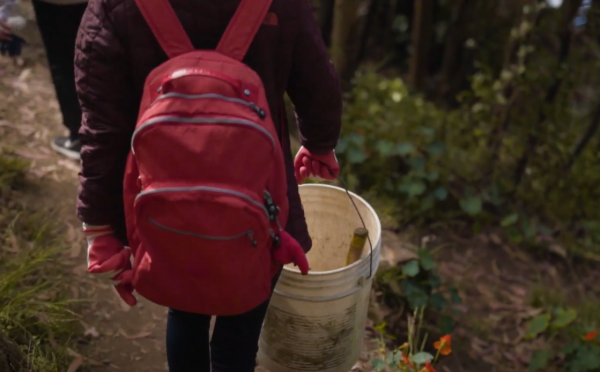 Short - Better Ancestors
Short - Better Ancestors
In California, the Sutro Stewards blend conservation, recreation and the concept of stewardship in an intense urban environment. By mobilising volunteers to build trails, remove invasive species, and grow and establish native plants, a severely degraded ecosystem is being restored. "When you restore the plant communities, you're restoring the base of the foodchain that other animals can participate in. It all starts with the plants," says Ildiko Polony, the director of Sutro Stewards. The story of the area's restoration provides hope that when we make the choice to give our natural spaces more love, we can reverse some of the damage we've done to them. www.betterancestors.org
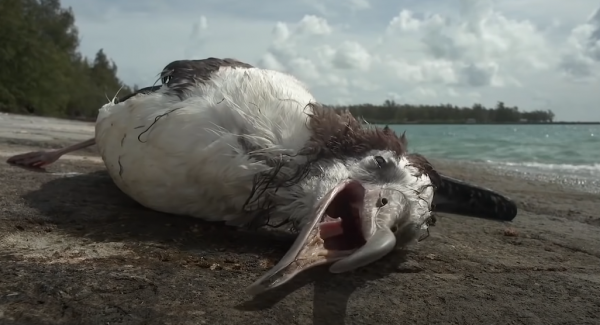 Short - Better Ancestors
Short - Better Ancestors
The Toroa or Royal Albatross is the world’s largest flying bird - and an endangered species native to New Zealand. When one of the majestic birds washed up on the East Coast in obvious distress last year, the family that discovered it took it to the vet, but the three-year-old bird died a few days later. It had swallowed a 500ml plastic drink bottle, which it probably mistook for a squid. Nine out of ten seabirds have eaten plastic and eight million metric tonnes of plastic make it into the ocean every year. So is there anything that can be done to stop the problem? www.betterancestors.org
 Short - Better Ancestors
Short - Better Ancestors
The health of the soil plays a crucial role in water quality, food quality and carbon sequestration but the pressures placed on it from industrial agriculture and excessive fertiliser use means it's currently not in the best shape. There are some farmers who see a return to nature as the smartest approach, however, both to create a more efficient business and to reduce their impacts on the environment. As Nicole Masters of Integrity Soils says, if we want to feed the world and still have a habitable planet, the only way to do it is through regenerative agriculture. www.betterancestors.org
 Documentary - Megastructures
Documentary - Megastructures
Singapore’s Marina Bay Sands is one of the world’s most complicated construction projects.
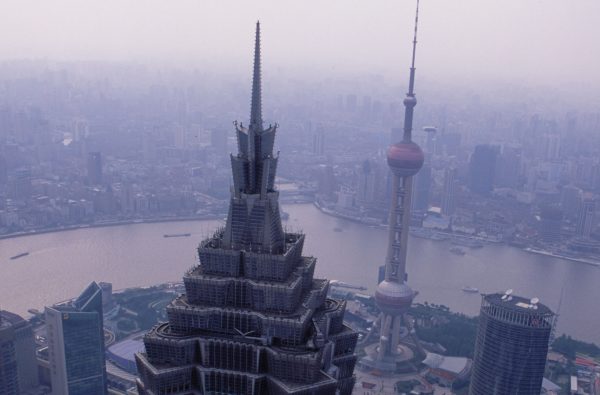 Documentary - Megastructures
Documentary - Megastructures
What do you get if you take sixty thousand tons of steel, 260,000 cubic meters of concrete, 2000 dedicated Chinese workers and the best design brains in the business? The Shanghai World Financial Center (SWFC).
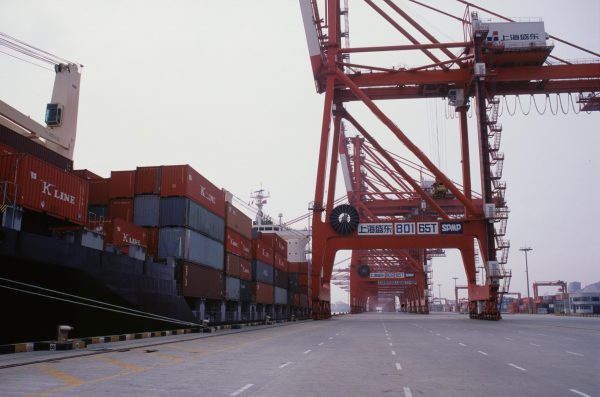 Documentary - Megastructures
Documentary - Megastructures
Over the centuries China has produced some of the world's greatest engineering feats from The Great Wall to The Forbidden City. The Deep Water Port at Yangshan is on track to becoming China's latest record breaking construction feat as the biggest deep water port ever built.
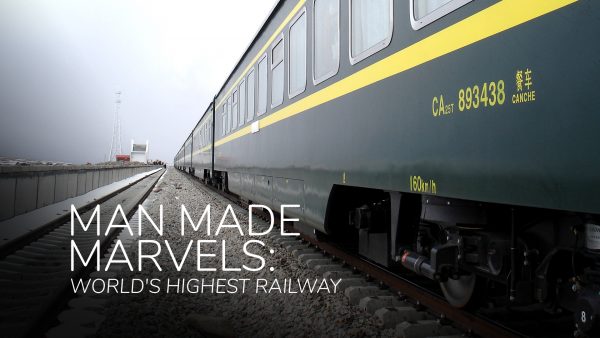 Documentary - Man Made Marvels
Documentary - Man Made Marvels
Faced with the perils of permafrost and the threat of earthquakes a team of engineers race to build a railway across the roof of the world at extreme altitude.
 Short - Better Ancestors
Short - Better Ancestors
In 2021, Better Ancestors produced 50 stories profiling people and organisations doing their bit to find solutions to some of the world's most pressing environmental issues. So what did they learn through that process? As executive producer Warren Begley says: "If individually and collectively we act as long-term thinkers, as if we wanted to be regarded as a better ancestor, then we will find the answers together." betterancestors.org
 Short - Better Ancestors
Short - Better Ancestors
The Ngā Mōtū Marine Reserve Society was set up in 1997 to support a network of small marine reserves on the Taranaki coast - Parininihi in the north, and Tapuae near New Plymouth. The society is made up of locals who are interested in the study and preservation of local coastal and marine biodiversity and their efforts to protect kororā (little blue penguin) have helped us understand what we can do to protect other taonga species in Aotearoa. betterancestors.org
 Short - Better Ancestors
Short - Better Ancestors
After Sir Peter Blake's death, The Blake Trust was set up to continue his work educating people about the state of our oceans and getting them to do more to protect the marine environment. NZVR, a partnership between Blake and New Zealand Geographic, does just that by bringing the ocean to our country's classrooms. It uses virtual reality to show rangatahi what it's like under the surface, introducing them to issues like over-fishing and pollution and, ideally, inspiring them to take action. As Blake's Alice Ward-Allen says: "Often they ask us stuff that I have never thought of. Kids just think in such different ways. The reactions we get every day are completely different. The questions we get are always different as well. They're the next generation, the ones who are going to have to step up and take care of our environment." www.betterancestors.org
 Short - Better Ancestors
Short - Better Ancestors
Untangled Landscapes started off working with domestic jungles, transforming them into well-manicured ornamental spaces. None of what they did was regenerative, however, and eventually the weeds would return. Since then, their approach has evolved and it's more about untangling people from the need to use chemicals and industrial materials in their gardens. They have stopped using poisons and weed mats - in part because they just don't work very well - and have instead started using natural principles and techniques borrowed from regenerative agriculture. As Matt Bates Cummings says: "Too often we see a symptom of something and we go 'I can't have that. I need to stop this.' And then you stop the regenerative process. We need to let things play out a lot more. It needs a bit of trust. You need to trust the process and watch it and observe it until we understand it completely." www.betterancestors.org
 Short - Better Ancestors
Short - Better Ancestors
Dave Lowe's journey with the atmosphere began in 1970 as a 23-year-old physics graduate, where he made the first measurements of carbon dioxide levels in New Zealand. The data he collected at Baring Head became an important part of David Keeling's research into the seasonal changes of carbon dioxide levels in the atmosphere - and, due to the steadily increasing levels he charted over the years, an inescapable record of what humans were doing to the planet. "I think everyone's aware now that the climate is changing very rapidly, but this is a horror I've had to live with for over 50 years," Lowe says. So can we turn the tide? "The thing that Covid-19 has taught us was that when there's an existential threat that's in your face, human beings can collectively get up and do some remarkable things. And in the same way, human beings can get to grips with global heating and dramatically reduce carbon emissions. We know how to do this." www.betterancestors.org
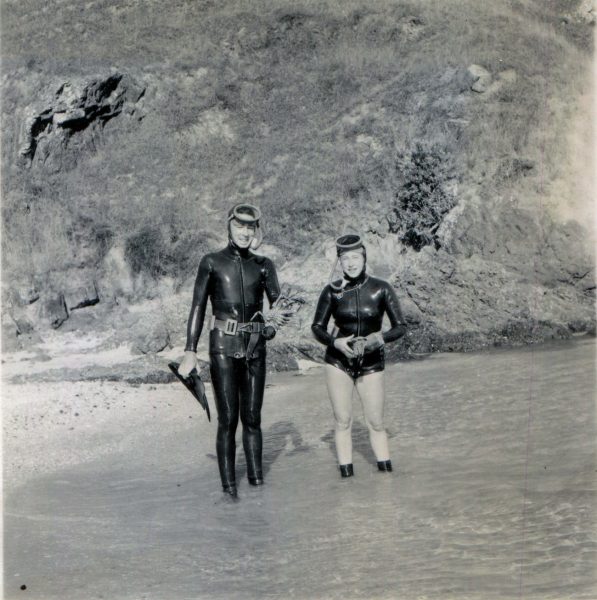 Short - Songs of the Sea
Short - Songs of the Sea
Pioneer divers Keith and Ailsa Lewis reflect on a lifetime of exploration in the Hauraki Gulf, the abundance of crayfish and their hopes for the future.
 Short - Songs of the Sea
Short - Songs of the Sea
Laly Haddon and daughter Olivia grew up on the pearly sands of their turangawaewae at Pakiri, and have witnessed radical change.
 Documentary - How the Silk Road Made the World
Documentary - How the Silk Road Made the World
Episode Three: Revolutions tells the stories of the objects and events generated by the Silk Road that helped to inspire revolutions. Paper-making spread from China throughout Asia and beyond. After the invention of the first printing press in 1440, millions of Europeans were reading printed content in multiple languages. Paper and the printing press democratised knowledge. Another world-changing implication of east-west trade was triggered by the Ottoman conquest of Constantinople, which blocked European access to the Silk Road. Christopher Columbus searched for another route to Asia by sailing west across the Atlantic and instead landed in the Americas. Jesuit missionaries in China forged close bonds with Chinese intellectuals and introduced Chinese civilization to Europe. Gunpowder transformed mining and helped to make New York a great city.
 Documentary - How the Silk Road Made the World
Documentary - How the Silk Road Made the World
Light From Darkness explores how deathly disease and new life alike travelled along the Silk Road to change the world. Journey through time, from the decimation of the Black Death to a grain that helped to overhaul agriculture. When the Black Death reached Europe, it spread about 5 miles per day. In a surprising twist, the plague triggered positive change for some Europeans. When the lethal disease wiped out much of Europe’s work force, the nobility were forced to compete for surviving workers by offering higher compensation. A middle class was born. Explore the important highs and lows of bio-migration during the history of the Silk Road. This episode investigates the way living things, ranging from millet to pathogenic liver fluke, reached Europe – with dramatic consequences.
 Documentary - How the Silk Road Made the World
Documentary - How the Silk Road Made the World
War explores how the Silk Road influenced conflict, from cavalry warfare to gunpowder. The series opens 2000 years ago, when the Roman Empire seemed unstoppable. However, the Battle of Carrhae saw one of Rome’s worst military defeats when the Parthians used cavalry tactics to their advantage. The style of cavalry warfare developed by Central Asian horse archers would later dominate warfare, made possible by several innovations; the recurved composite bow, socketed bronze arrowheads and a psychological shift towards cohesive groups of soldiers under military command. It was also around this time that the Roman Empire began to covet Chinese silk. Long distance trade between the peoples of Eurasia was nothing new; for thousands of years, similar relations had been impacting societies.
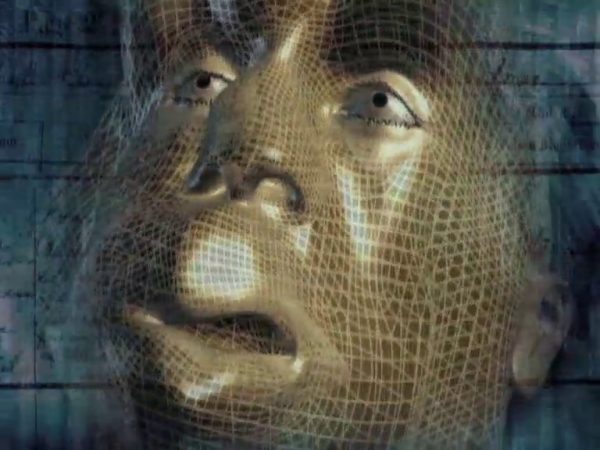 Documentary
Documentary
Joseph Merrick, the Elephant Man, was the most shockingly disfigured person in history. This compelling detective story uses forensic and genetic science to provide insights never before revealed about his tragic condition, and modern imaging techniques to reconstruct the face of the man beneath the deformities.
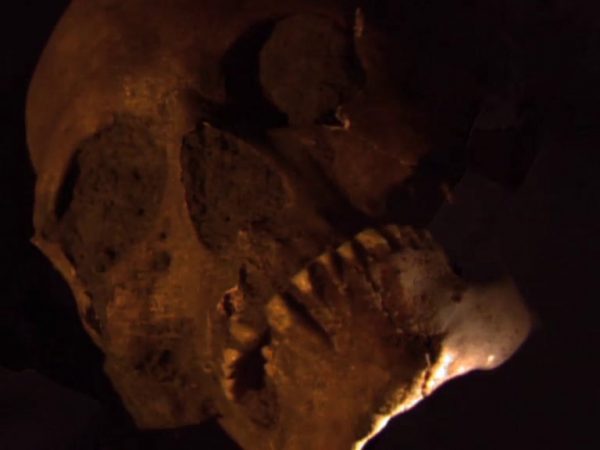 Documentary
Documentary
As archaeologists uncover ancient Peruvian tombs they piece together the mysterious lives and savage deaths of one of America’s most brilliant civilisations, the Moche.
 Documentary - Kill or Cure
Documentary - Kill or Cure
From religious ceremony to myths and horror movies, blood is the most potent of human symbols. Whether it is being sought by a hungry vampire or used in a modern hospital, blood flows in a rich red torrent through both medical and mythical history. We travel back in time to examine the history of this vital fluid.
 Documentary
Documentary
Through the eyes of two new recruits, we go behind the lines of the People’s Liberation Army in China to experience what it takes to become a member of Hong Kong’s defence force.
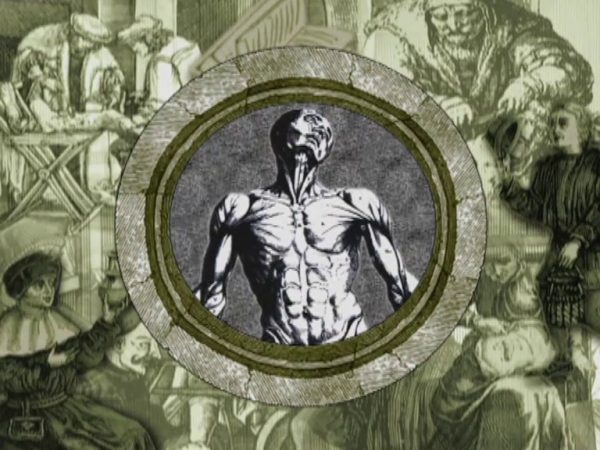 Documentary - Kill or Cure
Documentary - Kill or Cure
Pregnancy and childbirth make up an area of medicine that has suffered greatly from social, medical, religious and historical whims and misconceptions. This episode takes viewers on a journey through medical history from the ancient Egyptians, who linked fertility with the flooding of the Nile, to the dark ages when midwives were seen as witches and burned at the stake.
 Documentary
Documentary
A place where wild meets weird - and nothing is quite what it seems. Presenter Peter Elliott unravels the ancient past of New Zealand revealing astonishing new facts about the origins of our iconic animals. Be prepared to be shocked.
 Documentary - Wonders of the Ocean
Documentary - Wonders of the Ocean
Life in the ocean is a constant battle to eat but not get eaten, to find a mate, to pass on your genes to the next generation...to survive.
 Documentary - Wildlife Rescue New Zealand
Documentary - Wildlife Rescue New Zealand
At the Dunedin Wildlife Hospital, Dr Lisa needs to urgently assess a pair of unwell kākāpō, and Lizzie must convince a traumatised shag that it can swim. Many other animals are reaching the end of their rescue journeys as the southern summer draws to a close. The yellow-eyed penguin chicks brought in after an oceanic famine are finally old enough to be released into the wild. So too the four kākā chicks that were hand-reared by the Wildlife Hospital. The rascally parrots make an epic journey to the dazzling wilderness of Abel Tasman National Park, where a bright future awaits.
 Documentary - Wildlife Rescue New Zealand
Documentary - Wildlife Rescue New Zealand
At Dunedin’s new Wildlife Hospital, the team have been thrown a curve ball! Some yellow-eyed penguins have tested positive for avian malaria, and what’s more terrifying is they’re not alone. The team must jump into action to prevent an all-out epidemic. But the penguins aren’t their only patients. At two months old, the kākā chicks have become quite the handful, and need a new home quickly! In the quarantine wing, the population of kākāpō chicks is steadily increasing, but four new-borns have developed a potentially deadly disease. Lisa and her team will have some long nights ahead of them to save these precious babies.
 Documentary - Wildlife Rescue New Zealand
Documentary - Wildlife Rescue New Zealand
It’s mid-summer in Dunedin, and the city’s wildlife rescuers are in a flap. Eight newly-hatched kākāpō chicks have landed at the Wildlife Hospital, requiring Dr Lisa’s expert care. Lizzie and Emily need to deal with a very angry Fiordland crested penguin (who they soon nickname ‘Purple Rage’). And nurse Gina can’t help but laugh at the antics of the naughty kākā foursome. Out on the Otago Peninsula, the search for a mother sea lion and her pup goes to the dogs, literally, while a penguin researcher lives out her worst nightmare, and Purple Rage goes to rehab at Penguin Place.
 Documentary - Wildlife Rescue New Zealand
Documentary - Wildlife Rescue New Zealand
Its early summer in southern New Zealand, and the Dunedin Wildlife Hospital has been inundated with wave after wave of starving penguin chicks. Dr Lisa Argilla and her team pull out all stops to save the hungry youngsters. Add to this a clutch of endangered kākā parrot chicks that need ‘round-the-clock care, and a kiwi that’s refusing to eat; the results are bedlam. The hospital is being stretched to its limits. Meanwhile, out on the Otago coast, Pete investigates the arrival of a rare leopard seal, and Rosalie helps get an ex-hospital patient back into the wild.
 Documentary - Wildlife Rescue New Zealand
Documentary - Wildlife Rescue New Zealand
The new Dunedin Wildlife Hospital provides a second chance for injured native animals. Every day, Dr Lisa Argilla and her small team of wildlife vets give their all to save our precious fauna – from kererū pigeons with internal injuries caused by flying into windows, to a yellow-eyed penguin chomped on by a shark. Not all the arrivals survive their trauma, but thanks to the dedication of Lisa’s team and a network of local wildlife carers, most are successfully rehabilitated and finally released back into the wild. In an era where every animal counts, these are the precious moments that wildlife rescuers live for.
 Documentary - South America's Weirdest Animals
Documentary - South America's Weirdest Animals
South America’s Weirdest Animals is a 3-part series about South America’s wildest, weirdest and the most diverse animal life – from northern reaches of Colombia to the southern tip of Argentina and Chile.
 Documentary - South America's Weirdest Animals
Documentary - South America's Weirdest Animals
South America’s Weirdest Animals is a 3-part series about South America’s wildest, weirdest and the most diverse animal life – from northern reaches of Colombia to the southern tip of Argentina and Chile.
 Documentary - South America's Weirdest Animals
Documentary - South America's Weirdest Animals
South America’s Weirdest Animals is a 3-part series about South America’s wildest, weirdest and the most diverse animal life – from northern reaches of Colombia to the southern tip of Argentina and Chile.
3
$1 trial for two weeks, thereafter $8.50 every two months, cancel any time
Already a subscriber? Sign in
Signed in as . Sign out
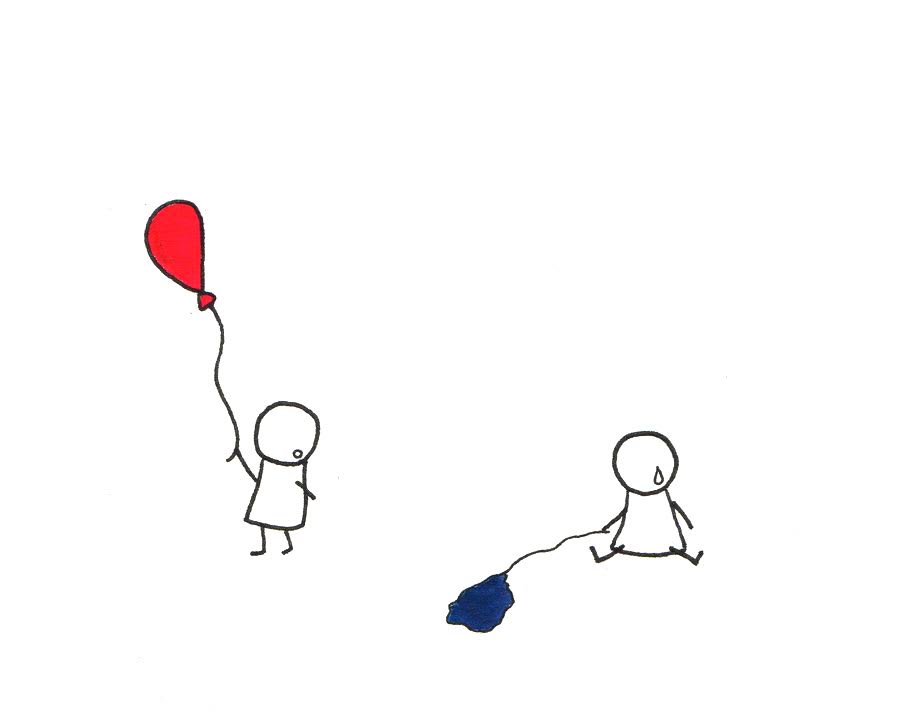
Ask your librarian to subscribe to this service next year. Alternatively, use a home network and buy a digital subscription—just $1/week...
Subscribe to our free newsletter for news and prizes